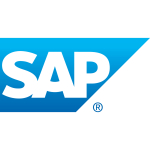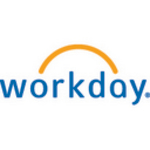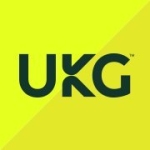What is most valuable?
I think the feature that really stands out for us, at least lately is, the fully responsive experience for applicants. We have our end-to-end application experience fully mobile responsive. They also host our career site, so having that be mobile responsive, and really configurable for us has been awesome. I'd say the most valuable feature is being responsive, and then a close second for us is probably the automation capability.
They call it RAM, the Rules Automation Manager. The fact that basically any action in the system can trigger something else to happen automatically, allows us to really automate our different processes and accommodate our business needs. We have a lot of volume, so having things happen automatically is a good thing. Those are probably the big two.
How has it helped my organization?
First of all, it has improved the applicant experience. We went from, last winter, if an applicant went on through a mobile device, they would actually be told, "Stop, now you have to go to a computer to finish your application." If they did manage to get through, past that, it was a lot of pinching, and a lot of pages, and a lot of text.
I think having the responsive be something that's standard – we're not paying a third-party vendor to get that functionality, it's just something they do – is one of those game changers for us. There aren't many companies out there that can say, Our end-to-end applicant experience is responsive, but on top of that, we didn't have to engage another vendor to do it. We're able to just do it with our current tool, and do it pretty well.
What needs improvement?
We have about 50 requests for enhancements in the system right now. We're a little anal. To be honest, it's smaller things. It's making sure that the responsive recruiter experience includes all the functionality that the non-responsive recruiter experience has today, before we transition to it. It's just simply continuing to see that evolution, without loss of functionality.
I also do want to see more robust reporting capabilities. Not getting into talent insights necessarily, but the embedded tools offering a little bit more dashboarding capability, tables, that type of thing, is something that I'm chomping at the bit for, because if I have to do another pivot table in Excel, I'll go mad. I would love it if you could set them up in the reporting tool to happen automatically and deliver. I know from the feedback I've gotten from the Kenexa development team that they're working on it.
What do I think about the stability of the solution?
I've been with Best Buy since 2013, but prior to that I was with another client. What I will say is, I feel like it's more stable now than it was a few years ago. I think what I noticed was when IBM purchased them, there was that time where they were trying to identify where Kenexa fit. What I've really seen over the last two years is a commitment and a doubling down by IBM to do that talent component right. It's really made the product feel, not only stable, but they're investing in it. It's evolving much faster than it was a couple of years ago.
What do I think about the scalability of the solution?
We're huge. It's plenty scalable. We have multi-million applicants a year, and we hire almost a 100,000 people a year. It does it great; we don't have issues during our highest volume time of year, when we're getting 30,000 applicants a day. It processes them just fine. The size and volume have not been an issue.
How are customer service and technical support?
Part of why I think we're actually expanding our relationship with IBM is their Global Support Center is fairly standard, compared to other support centers from other companies. Where I think that they're different is we have our clients success manager, as a contact. They're our personal person, for helping us become expert; for helping us better understand the product. They can help us solve problems in the system. They're a technical expert. There's a really big benefit to having not just the tech support from a point of view of, "I have a ticket, I'm going to enter it", and having that be done well, which it is. The real benefit is, "I don't have a problem; I'm just trying to solve a business problem, but I don't know how to do it.". They are experts who can help me find that answer.
Which solution did I use previously and why did I switch?
We previously used Kronos for our retail operation, we previously used Taleo for our corporate operation, and we used SuccessFactors for our career site.
For us, IBM evolving to be able to provide that end-to-end responsive experience was a lot of what drove our decision to go away from SuccessFactors, because we really utilized SuccessFactors or Jobs2Web to provide a responsive careers site and search engine optimization. The world's changed, and you don't need to be quite as intentional about that as you used to be, and then our real priority was a great mobile experience. That's something IBM could provide, and have it more naturally integrated with the ATS, which was why we went there.
The reason we went away from Taleo was we had implemented Kenexa for our entire retail organization successfully. After having two years of success with that in retail, it didn't make any sense to have multiple platforms. We like IBM. IBM has been great partners for us. They're really invested in our success, and they see us as a valuable client. I think when your vendor treats you like you're important, listens and responds, that's a differentiator, and that's something IBM does very well. We weren't getting that with the others.
How was the initial setup?
I was not involved in the initial setup. I was brought in five months after the initial setup to help with some challenges.
Which other solutions did I evaluate?
I wasn't with the company when they decided to go with Kenexa for retail, so I'm not entirely clear on all of the vendors they looked at. The only ones I know of are: of course they looked at expanding the relationship with Kronos; I know they looked at Taleo; and then I know they looked at IBM. I feel like there were likely more involved, but I was not part of that decision.
What other advice do I have?
If you're going to purchase this, it's awesome, and it can do pretty much anything you could imagine. Don't over-engineer it. Start simple. Start clean. If you want to add more later, you can. I'd say that the ability to dramatically customize this tool is a blessing and a curse. If the people involved don't understand how to do it, you're going to do it wrong. Get the right talent on board to be able to do it right.
During a presentation at a conference, somebody said, First optimize your process, then systematize it; don't systematize a process, that isn't ideal. Take that time, before you implement the system, to get it as clean as possible, and then make sure you've got experts involved in your implementation, and you're not over complicating it.
As far as selecting a vendor, I think there are two pieces to consider. Number one is we want them to care as much about our success as we do; it's not just a matter of, they get the contract paid, and then we're on our own.
Number two is seeing that they're evolving the product. We don't want to invest a ton into implementing them, and then have them stagnate. We need them to continue to evolve with the industry. Beyond that, we also need them to really prioritize our success, and if we're not successful, they view that as a failure by them and they will help us resolve that.
My rating reflects the technology; there are always opportunities. I think their commitment to doing something special and their commitment to taking a care of their customers supports the four-star rating.
I would be concerned. IBM has a different legacy than Kenexa has, and I hope that Kenexa keeps its identity, because if it does, it will maintain that really customer-focused mentality, and stay at four stars. I would be concerned that it would get a little too big business, if it gets more IBMified – if you get what I mean by that.
Disclosure: PeerSpot contacted the reviewer to collect the review and to validate authenticity. The reviewer was referred by the vendor, but the review is not subject to editing or approval by the vendor.










